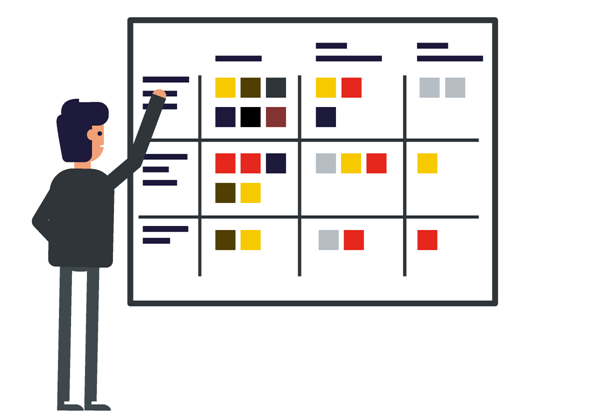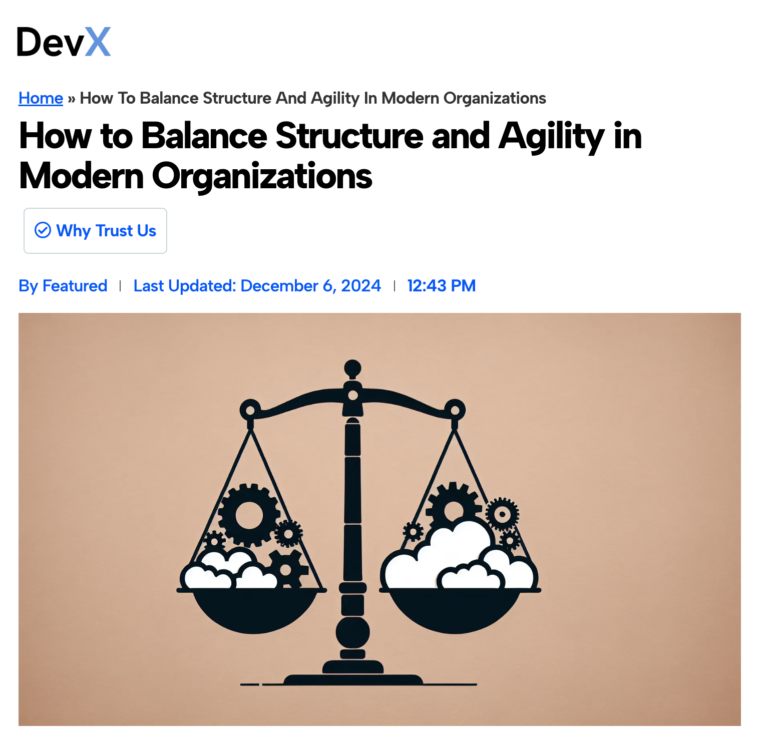If you are a business leader, manager, or owner looking to transform your organization and looking for external expertise to help, then this post is for you.
There are a couple of questions as a business leader, business manager, or business owner, you have when considering embarking down this track. Often, just the thought of attempting to run your own transformation is daunting enough, and when you think about bringing in external expert help, which if you are not careful if you don’t know what to expect, it could see the costs blow out the door, it’s no wonder Organisation’s decision to have a go at it on their own (I wrote about it in another post here).
So, in this article, we’ll put that question to rest and cover the three (3) things you should expect when you engage a niche and often boutique consultancy.
What to expect when you engage a niche consultancy?
The short answer to this question is – “It depends”. Or rather – “it should depend”. It should depend not on the Consultant or Consultancy you have brought in or thinking of bringing in to help, it depends on You, the client!
It depends on your preferences in “ways of working”. That is, you may prefer- ‘waterfall’ or ‘gated’ process, ‘agile’ or something in between.
Gated process
A gated project process allows you to agree on the work, time, and cost upfront, in a way to ‘de-risk’ the project. There are of course, just like other project management approaches – pros and cons to this approach (I wrote about the top 5 Dos and Don’ts of Business Transformation here).
There are also a lot of risks involved in transformation programmes, which is why some clients like a gated process. For them, it’s a way to provide certainty, particularly at the start of a project where there is usually the greatest number of unknowns.
Agile Approach
‘Agile’ has become the term of many meanings and interpretations. In this context, we are talking about iterative, incremental development of the product – whether that ‘product’ is a technology i.e., SaaS, or non-technology product or service i.e., business change, process improvement, organisation restructure etc.
This approach is seen by many to offer more flexibility (without the rigidness of the gated equivalent) but does require a level of skill and discipline to execute it properly.
The advantage for you, the Client, although there is can a little bit more uncertainty upfront as the requirements are not clearly defined. However, the trade-off is – as the project progresses, and usable versions of the product and/or service is released to you, you will get to see and realize the benefits of changes sooner, as changes are delivered in shorter intervals with the project team taking on real-time, and real-life feedback on the delivered changes, making changes as, where and when needed.
Hybrid Approach
The ‘hybrid’ approach is the combination of agile and waterfall, partly gated, partly agile.
The ‘hybrid’ approach is the combination of agile and waterfall, partly gated, partly agile.
Heath Gascoigne Tweet
Also nicknamed ‘wagile’. This ‘wagile’ approach (although not a ‘formal’ approach, and not widely accepted by the ‘agile purists’) takes the best of both worlds and provides the gated approval stage(s) as waterfall, while (mostly) providing the ability to manage work and requirements in an agile, iterative fashion between formal review and approval ‘gates’. A skilled Business Transformator will be able to advice you on the best approach for you. Check out our post on 8 habits of highly effective Business Transformation Consultants here).
Boutique Difference
If you didn’t know, working with a boutique Consultancy is different. A boutique consultancy knows what works for you based on your specific needs. They are often small enough and specialist enough to know your unique situation requires a tailored approach and not a ‘one-size-fits-all’ approach the bigger consultancies tend to use.
If, as the Client, you have a preference for the gated process because you are familiar with it and like the structure or do you prefer the agile approach because you like the flexibility? It’s up to you. As mentioned earlier, it’s the skill of the Consultant, (not the approach or framework) in applying the approach proportionately and appropriately to help you through your transformation.
Regardless of the approach you prefer, or chose, the phases the project is delivered remain the same. Here are the three (3) things you should expect when you engage a boutique consultancy to help you with your business transformation:
1. Phase One: Scoping
The first thing you should expect is phase 1 Scope. In the scoping phase, the Lead Consultant will visit the site. They will come on-site, to understand the problem, work with the You – the Sponsor and key stakeholders to “scope” out how big the project is for them to carry out both the cost and schedule estimate and come back to you with an proposal of how much they estimate the next phase of the project (‘costing’) will take and how much it will cost.
How much time scoping phase takes?
Once the Lead Consultant visits the site, gets access to the necessary stakeholders, understands the context, and prepares the estimates and proposal, the scoping phase could take between 2 to 4 weeks of work.
They will go on-site to the client, meet the key stakeholders, and come up with an understanding of the scope of work, the schedule, and cost.
They will put an estimate together for the type and number of resources needed to deliver the project. This estimating also includes the costs and benefits to be realized in that next phase.
Phase 1 is scoping the work for Phase 2 (with a high degree of confidence) and Phase 3 to complete the work.
The proposal here developed in the Scoping phase which answers the question: ‘How long and how many resources you need, and how much will it cost?’.
Remember, Scoping is an estimate, and it can vary significantly, it’s called ‘an estimate’ because at this early days / start of the project, this is where there is the greatest unknowns, and things we (You and the Consultant/Consultancy) don’t know until you get started and there could be more problems. You should expect the estimate to be accurate within +/- 20%.
The outcome of Phase 1 is you have got the scope of work agreed for Phase 2, and with the time, cost and resourcing estimates in hand, and agreed, you can and will start the resourcing (hiring, and/or allocating staff for the project) and start.
In terms of what activities, you will do, the Discovery phase covers in HOBA the Business Motivation Model, which is Step-1 Focus, in the Design Process, this activity gets everyone on the same page about what you want to do, where you want to do it, and how you want to do it. The scoping the program, documenting and agreeing the work, and objectives is captured in the Statement of Work (SOW). To learn about the 6-step design process, check out my other post here).
2. Phase Two - Discovery & Design
The second thing you should expect is Phase 2. This is where the resources that were outlined in the Statement of Work (SOW) from the ‘Scoping’ phase, now come on site (or join virtually) and the project effectively starts. In terms of HOBA and the Design Process, you are going through the following steps:
- Step 2 – Control, is where the consultant will, working with you, to identify and agree the Governance Model (and framework) of who (and how) decisions are made on the project, the people who need to be and should be in those boards (stakeholders from both the Business, and Technology, not just technology!), design principles to control the scope, and the process and register to capture and monitor risks, issues, assumptions and dependencies;
- Step 3 – Analyse, is where the consultant will analyse your Current Operating Model, to understand and agree the pain points and opportunities the organisation wants to reduce, and take advantage of;
- Step 4 – Evaluate, is where the consultant will, working with you – will evaluate (quantify) the Business Benefits the organisation wants to realise (and in-scope changes that are needed to be implemented that enable the business to realise those benefits) using the HOBA benefits model reference model; and
- Step 5 – Design, is where the consultant will design the Target Operating Model (TOM), by making changes identified in Step 4 – Evaluate, that when implemented address the pain-points (and opportunities) in the Organisation today from Step 3 – Analyse, agreed to by the Governance body in Step 2 – Control.
The outcome of Phase 2 is, you will the complete design of your Target Operating Model (TOM), which is effectively a second or next Statement of Work (SOW), but this SOW is to build and implement the changes, including the people process technology and data changes that were a part of that Step 5 – Design, the Target Operating Model (TOM).
So, at this point, you, the Client, would review and agree the TOM (and SOW), and then on approval, the remainder of the project team will come on board and do the build and implementation.

The outcome of Phase 2 is, you will the complete design of your Target Operating Model (TOM), which is effectively a second or next Statement of Work (SOW), but this SOW is to build and implement the changes, including the people process technology and data changes that were a part of that Step 5 – Design, the Target Operating Model (TOM).
So, at this point, you, the Client, would review and agree the TOM (and SOW), and then on approval, the remainder of the project team will come on board and do the build and implementation.
3. Phase Three - Build & Implement
The third thing you should expect is Phase 3. This is the phase (Phase 3 – Build & Implement), is where the resources agreed in Phase 2 join the project, if they haven’t already i.e. Business Change/Change Manager, and the Technology Team members and the build (and implementation) starts.
This is effectively Step 6 – Implement, of the Design Process, and in HOBA, this covers the Roadmap Model, where you will be building the physical changes from Step 5 – Design, and the Target Operating Model (TOM), and doing the implementing as outlined in the roadmap and implementation plans, which also includes building and delivering the necessary training development and rollout.
This is what you should expect from a boutique consultancy when they come in and help you design and implement your Target Operating Model (TOM).
HOBA TECH Niche Boutique Consultancy
So know you know what to expect when you engage a niche boutique consultancy.
We’re always excited to help organizations have successful projects, save time and money on doing their project – not filling up you or your staffs diary with ‘interesting but useless work’ that doesn’t get you closer to transformation, but most importantly realise their planned business benefits and actually achieve your Vision. If you are concerned about your programme or project that you‘ve launched or need help starting, reach out to us, contact a member of the HOBA TECH team or use the Contact Us form.
Thank you for reading this!













